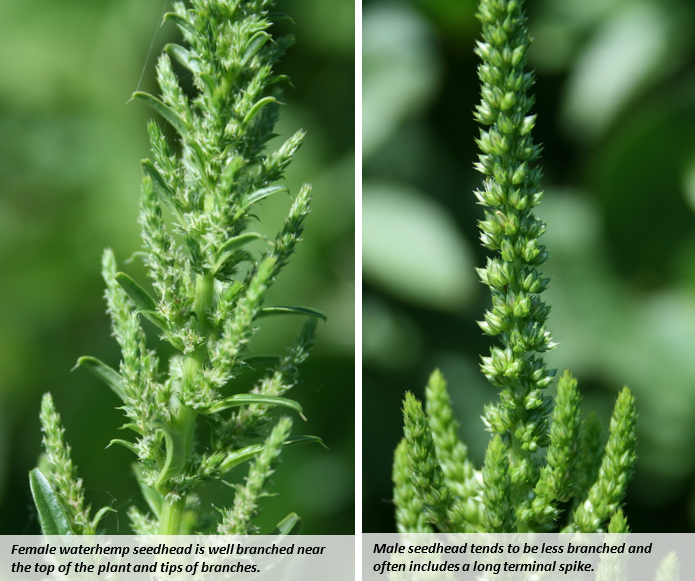By Tom Peters, Extension Sugarbeet Agronomist
Soybean are well past flowering, producing two and three seed pods on tens of nodes per plant. In a few weeks, soybean will begin to senescence as the plant completes its lifecycle.
Waterhemp also is growing in soybean fields and now is visible above the soybean canopy. Waterhemp was identified in three locations in Pembina and Walsh Counties, North Dakota, and in Marshall County, Minnesota in July.
Waterhemp was recently identified in fields near Grafton and Fordville in Walsh County, Inkster in Grand Forks, County, Bathgate in Pembina County and Vang in Cavalier County. There also are additional fields in Marshall County, MN with waterhemp. A common feature in many instances are plants growing in the low lying areas of fields, areas of the field that retained moisture well into the summer.
How can I determine if a weed is waterhemp? First look for the smooth stem. Waterhemp plants typically have no hairs on leaves or stem. Leaves are very dark green in color with a glossy sheen. Leaves typically are very smooth to the touch. There is a tremendous amount of plant-to-plant variation beyond these physical features, including leaf size and shape, plant height, stem color, and color and shape of the flower.
What should I do if I suspect a weed is waterhemp? We recommend positive identification so that we can map to county and township within county. Contact your county agent, your ag-retailer or crop consultant for positive verification. We recommend pulling waterhemp if there are not many plants and carefully placing them in garbage bags and ensiling or drying/burning plant material.
Pulling must be down in a timely manner as waterhemp (or any pigweed) identified in a field can produce viable seed in 10 to 14 days after flower initiation. Waterhemp plants are either male or female plants (dioecious). Thus, male plants only produce pollen and leave the appearance of immature seed. Don’t be fooled, as three to four plants in ten are female waterhemp plants and produce 200,000 seeds that remain viable for about four years once they enter the seed bank.
When planning for 2017 cropping systems, the most consistent waterhemp management programs — regardless of crop — consist of a sequential weeds management strategy. For example, utilization of multiple control options, including tillage, crop rotation, soil-applied herbicides, and postemergence herbicides.






Post a comment
Report Abusive Comment